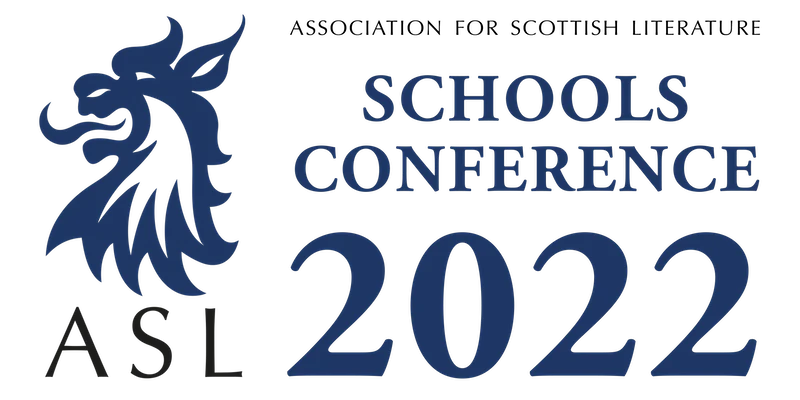
October 1, 2022 @ 10:00 am – 4:00 pm
The ASL Schools Conference will offer CPD in areas of language and literature for teachers of English, for BGE, National 5, Higher, and Advanced Higher. The presentations will cover drama, poetry, short stories, novels, non-fiction, creative writing, and storytelling, in English and Scots.
Please note, this event is aimed at teachers and teachers-in-training, specifically those who are or are likely to be delivering the English curriculum in Scotland.
Programme
- 10:15–10:25 Welcome
- 10:25–10:40 Teaching resources for Walter Scott (Anna Fancett)
- 10:40–11:20 Extending the range – three “new” Scottish short stories (Gerard Carruthers)
- 11:20–11:40 Coffee
- 11:40–12:20 Alasdair Gray’s novel Lanark (Alan Riach)
- 12:20–13:00 Hannah Lavery’s play Lament for Sheku Bayoh (Gillian Sargent)
- 13:00–14:00 Lunch
- 14:00–14:20 Reading Scottish non-fiction (Cheryl Simpson / Andrew Young)
- 14:20–15:00 Creative Writing in different genres (Gerda Stevenson)
- 15:00–15:10 Break
- 15:10–15:50 Oral Storytelling – skills and art (Donald Smith)
- 15:50 End of Conference
Anna Fancett is a teacher, storyteller, and scholar. She is currently working with the University of Aberdeen’s Walter Scott Research Centre to promote the work of Walter Scott to school pupils.
Gerard Carruthers is Francis Hutcheson Chair of Scottish Literature at the University of Glasgow, and is currently editing the Everyman Book of Scottish Stories.
Alan Riach is a poet and Professor of Scottish Literature at the University of Glasgow. He appears, briefly and fictionally, in Alasdair Gray’s Old Men in Love.
Gillian Sargent is a teacher of English at Grange Academy, Kilmarnock, and has tutored in Scottish Literature with the Scottish Universities’ International Summer School.
Cheryl Simpson and Andrew Young are teachers of English at St Aloysius’ College, Glasgow.
Gerda Stevenson is an award-winning writer, actor, director, and singer-songwriter. Her poetry, drama, and prose have been widely published, staged, and broadcast.
Donald Smith is a founding member of the Scottish Storytelling Forum, and is currently Chief Executive of Traditional Arts and Culture Scotland as well Director of the Scottish International Storytelling Festival.
ASL gratefully acknowledges the support of the Scottish Government towards this conference.
